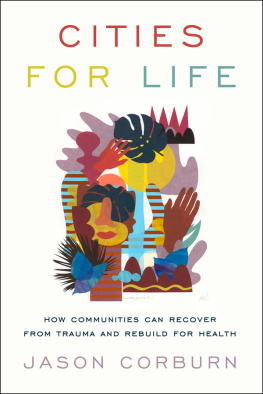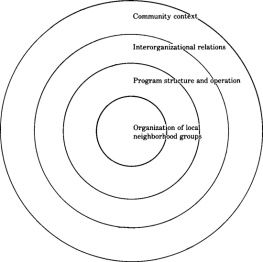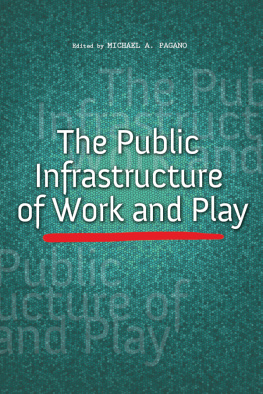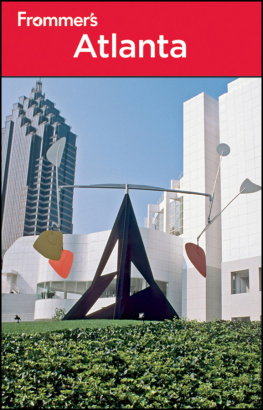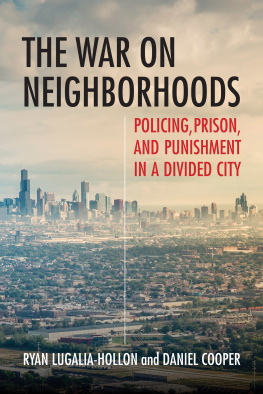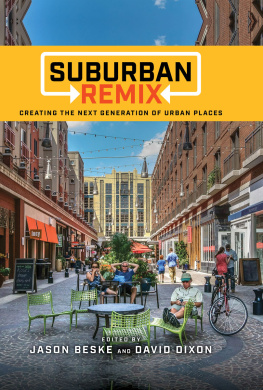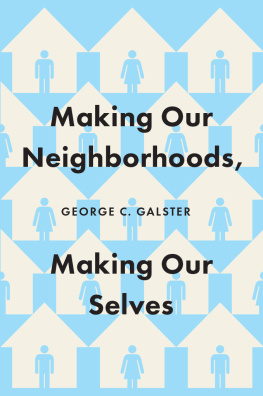Where W e Want t o Live
Reclaiming Infrastructure for a New Generation of Cities
Ryan Gravel
St. Martins Press
New York

Thank you for buying this St. Martins Press ebook.
To receive special offers, bonus content, and info on new releases and other great reads, sign up for our newsletters.

Or visit us online at us.macmillan.com/newslettersignup
For email updates on the author, click here.
The author and publisher have provided this e-book to you for your personal use only. You may not make this e-book publicly available in any way. Copyright infringement is against the law. If you believe the copy of this e-book you are reading infringes on the authors copyright, please notify the publisher at: us.macmillanusa.com/piracy .
For the people of Atlanta... especially Karen, Lucia, and Jonas.
The story of people can be told through our infrastructure. In the rise and fall of cities throughout history, the places best positioned for a thriving future have always been those that offer systems and structures to support the timely needs of people. Relevant variables including politics, culture, technology, and business help us leverage those systems to create the lives that we want. And we can see that as the innovations of canals, aqueducts, railroads, and highways did in their time, the kind of infrastructure that we build today matters to our success. If we do it right, it will forever transform our way of life.
Our lives are already changing, and today we find ourselves participants in an organic and unplanned, but also irresistible, response to the advances and limitations of these changes. The culmination of millions of individual decisions is generating a new prevailing cultural momentum that is appreciably different from our experience over the last half century. People everywhere are responding to this new cycle of change by harnessing its energy to create new opportunities for their lives. As their efforts organize instinctively around physical infrastructurethe underlying construction of cities that also happens to form the foundation of our economy, culture, and social lifethese active participants are doing more than making their lives more interesting. They are charting a brighter path forward for cities.
As we stare ahead in both wonder and disgust at the metropolis sprawled before us, these kinds of actions are important. They are the first breaths of a beautiful, tangible, and growing new cultural life that is just beginning to be constructed in physical form. Though still small, their collective legacy will be comparable to the revolution that came with the automobile, and they will help resolve the most daunting challenges of our time. By taking action through businesses, governments, nonprofits, and even unorganized citizen campaigns, grassroots leaders are testifying to our ability, opportunity, and desire to grab hold of this amazing cycle of change and create places where we actually want to live. In the process, they are demonstrating how ordinary people can leverage their pragmatic instincts for self-preservation and prosperity to support a more sustainable, healthy, and equitable way of life for everyone.
My confidence in this cycle comes from daily validation of the vision we created for the Atlanta Beltline, a 22-mile circle of repositioned infrastructure that is changing both the physical form of my city and the decisions people make about living here. It began with a kernel of vision as my graduate school thesis in 1999 and has evolved into an astonishing journey of transformation that is now in the early stages of construction. As the project slowly reclaims a set of mostly abandoned railroads and fallow industrial land as a continuous loop for transit, trails, parks, and redevelopment, it is turning what was once a barrier into a linear common meeting ground for over 40 neighborhoods surrounding downtown. While my version of our story is not an official or comprehensive account for the hundreds of people and dozens of agencies and organizations required to make the project come to life, it sets the tone for a much larger unifying narrative about the strategic role of infrastructure in catalyzing a more desirable future for ourselves.
That role for infrastructure was first revealed to me during a college year in Paris and then continuously throughout my journey. It is an invaluable and intimate lesson that also, perhaps subconsciously, captivated the imagination of the people of Atlanta and made the project possible. And in my travels to share our story, I have found it reinforced in the work of people from Memphis to Singapore who are also reinventing their infrastructure to support new ways of living. Whether they are finding new life for old railroads, degraded waterways, or obsolete roadways, the concurrent emergence of these efforts, outside any common ideology, suggests that they are part of a larger movement brewingthe zeitgeist of our time. Their efforts range in scope and scale from the small but powerful High Line in New York City to sublime proposals for the revitalization of the Los Angeles River. They vary widely in the breadth of their programs, their progress to date, their politics, and their partnerships, but together, these inventive, popular, community-driven public works projects illustrate how people everywhere are reclaiming infrastructure as renewed conduits of urban life.
The technical metrics of this new generation of infrastructure are worth noting, but my primary interest is what they mean and why they matter. My lens for this investigation is our extraordinary and unexpected success in Atlanta, which has developed into one of the most wide-ranging urban regeneration projects in the country. It is reinforced by people working the ground game on these other efforts and by my observation that the decisions fueling them are not coming from Congress or City Hall. Theyre made by ordinary people like you and me, and the force of their shared momentum is growing more powerful by the day. Common lessons from a broad range of projects across a vast geography are uniting into a powerful, messy, organic, and grassroots transformation that touches nearly every aspect of our lives.
By claiming a more conscious role for infrastructure, we can help shape and advance this cycle of change and use its energy to establish the foundation for a better life. This will allow us to finally forget tired old arguments about traffic, pollution, blight, and sprawl and instead leverage those conditions as assets in the creation of something far more interesting than anything weve seen so far. If we are thoughtful, if we work hard, and if we care, this new claim will allow us to leverage change to work for us, not against us, and in the process, catalyze the creation of places where we want to live.
The tree-lined streets of the 16th arrondissement immediately behind the Trocadro had suddenly and somehow unexpectedly broken through the long, beige, bleak Paris winter. It seemed that, exactly at the moment that I emerged from the Mtro, they exploded in the sunlight with impossibly green young leaves at the end of every branch. They led me behind an imposing wall into the Cimetire de Passy, which had also burst to life with bright flowers and singing birds. A spirit of lightness shone through the stained-glass windows of the cemeterys many mausoleums, lifting the gloom of winter, and the smiles on every passerby confirmed that I wasnt the only one who had noticed.


